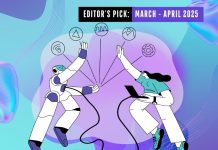By Jacques Bughin and Philipp Remy
Agentic AI is a new class of AI systems that combine goal-driven autonomy and represents the third wave of AI, moving beyond prediction and generation to execution. While early use cases already show value generation in many sectors, challenges concerning its reliability, governance and accuracy remain. Enterprise adoption is on the rise, but the way forward requires careful design, clear use cases and human oversight (humans in the loop). Business leaders must act with realism and urgency, preparing systems, teams and strategies for AI-powered collaboration.
1. Introduction
Agentic AI refers to intelligent systems capable of pursuing goals through multi-step reasoning, dynamic decision-making and the use of tools. Unlike earlier forms of AI that required constant human intervention, these agents operate semi-autonomously or fully autonomously, relying on APIs and web interfaces to take real action on behalf of users and workers.
Agentic AI uses large language models as its core reasoning engine, but wraps them in agents capable of planning, acting, using tools, remembering context and learning from results. The result is not just increased automation, it’s a new paradigm: an intelligent digital workforce that executes, adapts and collaborates in ways hitherto reserved for humans.
As the next frontier of AI-enabled enterprise, the key question is no longer what’s possible, but what works, and how quickly it will become the norm.”
2. Five Unknowns…to Know
Fact 1: Agentic AI is the third wave of AI
Much confusion still surrounds the notion of agentic AI (AAI). A useful way to understand it is to examine its relationship with previous waves of AI.
Predictive AI (PAI) – the first wave – focused on automating routine tasks such as forecasting, classification and pattern detection from structured or semi-structured data. Think remote sensing, machine translation and speech recognition.
Generative AI (GAI) – the second wave exempted by Open AI – introduced the ability to create new outputs such as text, images or code. It revolutionized content generation, but remained dependent on user prompts and limited to its learning data.
Agentic AIs don’t just assist human action; they enhance it by taking on tasks that require high involvement and multi-tasking without constant human intervention.
Today, agentic AI (AAI) – the third wave – goes a step further. It is based on large language models (LLMs), but extends their use by integrating them into autonomous agents that reason, act and adapt. These systems can make decisions, perform tasks and learn continuously, giving them added value beyond ad hoc content generation. Thus, one of the factors driving the design of agentic AIs is the need for tools designed to operate in better but complex real-world conditions, with plenty of room for maneuver. Agentic AIs don’t just assist human action; they enhance it by taking on tasks that require high involvement and multi-tasking without constant human intervention.
Fact 2: Agent AI – the tip of the iceberg
Agentic AI has long been the stuff of dreams – like the first generation of AI that relies on the cloud and machine learning algorithms, agentic AI is not a “breakthrough ex nihilo”, but rather the result of six enabling forces.
LLM models such as GPT-4, Claude 3, Mistral and others can now reason, understand and adapt to all domains, representing a significant advance over fragile rule-based systems. Secondly, we now have a scalable computing infrastructure with access to AI-optimized GPUs (NVIDIA H100s), edge computing and containerized deployment frameworks that enable the use of high-performance real-time agents. Thirdly, open-source frameworks such as LangChain and commercial SaaS APIs enable agents to interact with software as actors rather than observers.
And with retrieval-augmented generation (RAG), vector stores and windows of over 100,000 tokens, agents can reflect, learn and remember over time. Finally, natural language interfaces offer code-free delegation and interfaces that can be easily used by end-users and non-technical teams alike.
Fact 3: Combining six unique capabilities
If agentic AI is the result of a set of converging technical forces, agentic AI has a set of capabilities that totally differentiate it from previous AI approaches
One of the hallmarks of agentic AI is autonomy; whereas generative systems wait for instructions, agentic agents can operate independently once given a goal. For example, Adept’s ACT-1 system allows users to enter high-level instructions such as “Plan sales meeting and prepare presentation”, and the agent autonomously takes care of the details: checking calendars, creating slides and sending invitations, all without additional intervention. This is in stark contrast to traditional tools, which require users to orchestrate each step manually.
Agentic AI is also proactive. Unlike generative systems that respond to prompts without awareness of broader goals, agentic agents pursue objectives. They initiate tasks, monitor progress and correct course if necessary. Shopify’s Sidekick, for example, can take into account a merchant’s overall goal – such as “increase my store’s conversion rate” – and proactively suggest price changes, rewrite product descriptions and launch A/B tests. In the consumer field, Amazon’s Returns Assistant demonstrates similar capabilities by accessing a customer’s order history, determining the eligibility of a return and proposing personalized solutions in real time, all without human escalation.
Crucially, agentic systems make complex decisions. They evaluate trade-offs, prioritize actions and adapt according to the results. In sales and marketing, platforms like Relevance AI deploy agents that don’t just send emails, but actively generate and test lead generation strategies by combining data on ideal customer profiles, historical campaign performance and channel effectiveness. Similarly, Composer – formerly MindStudio – uses agents that orchestrate multi-channel campaigns, optimize budget allocations and iterate on messages to boost performance, making real-time decisions at every stage.
Learning and adaptation are another characteristic feature. While generative AI can improve through retraining, agentic systems are designed to constantly evolve from their own experiences.
Learning and adaptation are another characteristic feature. While generative AI can improve through retraining, agentic systems are designed to constantly evolve from their own experiences. Spotter.ai, for example, improves its interactions with customer support over time by learning from feedback and results. The agent aligns itself more closely with a brand’s tone, escalates fewer tickets and anticipates customer needs based on previous cases. Cognosys goes a step further by enabling agents to “learn” an organization’s internal documentation and tools, then autonomously integrate new employees by generating guides and answering domain-specific questions without starting from scratch every time.
Tool integration is another key capability. Agentic AI is not limited to conversation or content generation – it acts in the real world. Thanks to APIs, databases, form submissions and software interfaces, agents can perform end-to-end workflows. AutoGPT and Superagent, for example, can be connected to platforms such as CRMs, messaging services and payment processors to perform real-world business processes such as greeting customers, updating records, sending invoices and tracking transactions – autonomously and on a massive scale. This autonomy is not limited to single-step actions. Agentic systems reason and plan in several stages, adapting as they get closer to a goal. Let’s take the example of an agent built with LangChain, which is asked to analyze the prices charged by competitors. He might start by researching websites, then compare prices with internal margins, recommend markdowns, and finally draft an internal memo for the sales team. Each of these steps depends on the results of the previous one, requiring continuous reasoning and adjustment.
Memory is another cornerstone. Agentic agents retain knowledge of previous interactions, user preferences and the relevant organizational context. This enables them to deliver consistent, context-sensitive performance over time. Tools such as personal AI store and recall information about how a person writes, thinks and communicates, which
It is the combination of these capabilities that makes agentic AI an active collaborator in business processes; autonomy and multi-stage planning enable agents to take on entire tasks (such as qualifying potential customers or reprogramming logistics) that would otherwise require many hours of human labor. Proactivity and complex reasoning enable agents not only to respond to problems, but also to predict and optimize them (avoiding lost sales or supply disruptions). Continuous learning ensures that these agents don’t stagnate – a marketing agent gets smarter with each campaign, a supply chain agent adapts to new market data – delivering cumulative returns over time. Tool integration enables agents to execute decisions directly within enterprise systems, reducing the time between understanding and action. Memory gives agents the rich context needed for personalization and consistency, turning interactions into relationships (customers feel that AI “knows” them, employees find that AI remembers corporate knowledge). Last but not least, human supervision closes the loop by providing the governance that allows all stakeholders to feel comfortable deploying these powerful autonomous systems in mission-critical operations.
Fact 4: Agentic AI is still in its infancy, but is already delivering value.
There are already a large number of use cases for agentic AI technologies in various sectors, from healthcare to industry. In healthcare, an agentic AI-based monitoring system developed for healthcare monitoring can independently identify deterioration in a patient’s condition through regular monitoring of vital signs. In Germany, MediTech AI’s diagnostic system actively highlights areas of concern and suggests diagnoses, resulting in a 30% improvement in diagnostic accuracy and a 50% reduction in diagnosis time
In the financial sector, WorldQuant exploits agentic AI, and more specifically reinforcement learning, to create trading algorithms capable of adapting in real time to changing market conditions. These algorithms analyze large amounts of financial data, identify patterns and execute trades autonomously. AI is designed to continuously learn from its successes and failures, adjusting its strategies to optimize performance. A key element is that AI identifies and exploits market inefficiencies, rather than simply reacting to pre-programmed rules. It works like an agent making decisions.
In sales, Salesforce’s Agentforce 2.0 has introduced agent skills such as sales development and sales coaching, as well as lead development and personal buying. The sales coaching agent, for example, uses AI and CRM data to analyze sales pitches and role-play sessions, providing personalized feedback to help sales reps close deals more effectively. Other AI agents help with marketing campaigns, merchant management and service planning. These additions enable companies to nurture leads, participate in prospecting calls, provide feedback and tailor skills to various use cases, including field service work. Skills can be customized to meet specific business needs
In the field of enterprise automation, players such as UiPath have deployed AI-powered process agents that manage workflows in finance, procurement and IT In a factory, agentic AI calculates the expected time to machine failure and remaining useful life, as well as when to perform maintenance activities to maximize operational availability. This system exploits data from a cluster of machines to proactively predict future breakdowns and optimize resource distribution, which in turn boosts production as part of the company’s automation.
In the contact center sector, Cresta AI has implemented AI coaching agents that operate in real time, suggesting optimal responses, highlighting best next actions and automatically evaluating call quality. Fortune 500 customers using Cresta have reported a 25-30% reduction in handling time and a 20% increase in conversion rates. The AI-based QA system now replaces over 80% of manual QA work. Another example is cable media company Comcast, which has implemented a search-augmented AI agent called AMA (“Ask Me Anything”) to support its customer service teams. The agent provides real-time answers to questions posed by agents during customer calls, reducing the average handling time of support conversations involving complex issues by more than 10%. The company also reported millions of dollars in annual savings and over 80% positive feedback from human agents using the system.
In the field of human resources and recruitment, Paradox’s “Olivia” agent automates high-volume recruitment for companies such as McDonald’s and Unilever. The agent selects candidates, schedules interviews and answers applicants’ questions. Case studies show that Olivia reduces the time spent by the recruiter on each candidate by over 90%, and cuts the time to hire by a factor of four, while maintaining a candidate satisfaction rate of over 95%.
Agentic cybersecurity systems such as Exaforce, Legion or Aptori are also built to make human experts more efficient by automating certain aspects of their work. They can detect attacks autonomously and produce reports, improving system security and reducing the workload of human experts by up to 90%.36 Agentic AI can also help software development teams detect vulnerabilities in new code. It can run tests and communicate directly with developers to explain how to proceed. It can run tests and communicate directly with developers to explain how to solve a problem – something that human engineers have to do manually today.37
Fact 5: Rome wasn’t built in a day.
These case studies highlight one constant: agentic AI is not a fad, and can deliver operational benefits. But behind the scenes, AI agents need to work with great precision to go mainstream.
With regard to the above cases, we can deduce that agentic AI works (read: requires) well for defined task domains, clean structured data and tool integration. Otherwise, the benefits of agentic AI can only be speculative.
If we look closely at the experience of AI agents today, we have to admit that success rates for agentic AI are still low. Even the most successful AI agents achieve success rates as low as 24% in benchmarks involving realistic tasks such as those encountered in software engineering roles. Tasks requiring long-term planning or multi-stage execution amplify failure rates due to cumulative errors. The most successful models (e.g. Claude 3.5 Sonnet) are also the most expensive, while cheaper models such as GPT-4o achieve significantly lower success rates and require more steps to solve tasks, which is a strong indication of residual inefficiency.
Agents that rely on multiple API calls or attempt long chains of action can become slow or inconsistent, degrading the user experience.
On the other hand, agentic AI remains fragile. One of the most common problems of generic AI is hallucination, i.e. the model’s tendency to invent information when confronted with ambiguity. In agentic systems, hallucination becomes more dangerous because it can lead to actions, not just words. For example, an agent who misinterprets a vague instruction may cancel a customer’s account instead of pausing it. Worse still, AI agents seem to continue to struggle against adverse inputs, hallucinations and cascading failures in high-risk use cases such as medical data processing or financial transactions. Another failure mode is over-autonomy. When agents are allowed to chain tool calls or operate on multiple systems without supervision, unforeseen results become more likely. Companies deploying these systems therefore need to put in place strong safeguards: action constraints, pre-approved APIs, audit logs and optional human intervention steps in the loop.
Latency and complexity also pose problems. Agents that rely on multiple API calls or attempt long chains of action can become slow or inconsistent, degrading the user experience. Many vendors are now implementing optimization layers that prioritize speed and reliability, while others use fallback flows or escalations to avoid critical failures.
Finally, failures often occur during handovers between humans and agents, or when agents have to clarify ambiguous instructions.
The fragility of artificial intelligence agents has several consequences today. While AI agents can handle routine tasks, they are far from ready for high-stakes or unsupervised applications. Today’s applications must also continue to rely heavily on “agentic workflows”, where AI agents operate semi-autonomously, but under close human supervision. Companies need to carefully assess where and how to deploy these systems to avoid costly mistakes.
Finally, multi-agent systems – where several AI agents collaborate seamlessly – are the new mantra of agentic AI, but they may remain largely experimental as they tend to multiply errors rather than solve them.
3. Preparing for the Agentic AI Wave
So agentic AI works, but remains narrow, with human supervision in the loop. The way ahead is, like any new technological advance, somewhat uncertain, but some conjecture suggests that the future may develop more rapidly than previously thought.
Technology improvement curves accelerate
The first is that the technological evolution of AI agents could follow a rapid trajectory, similar to that of other transformative technologies such as autonomous cars and generative AI.
Self-driving cars faced similar early challenges: high costs, limited reliability in complex environments and regulatory hurdles. Over time, improvements in sensor technology, machine learning models and safety protocols have made autonomous vehicles more viable, even if they are not yet fully autonomous.
On the other hand, generative AI has seen rapid progress since its inception, In benchmark tests such as GLUE and MMLU, for example, GPT-3 scored 43.9% on MMLU in 2020, while Gemini 1.0 Ultra surpassed human performance with a 90% score in December 2023 – a doubling of accuracy in the space of three years. However, generative AI also shows performance degradation when applied outside its scope, a problem reflected in AI agents.
Agentic AI also builds on the foundations of LLMs, leveraging their capabilities for autonomous decision-making, contextual understanding and continuous learning. For example, agentic AI systems use frameworks such as LangChain and LlamaIndex to connect LLMs to external tools and databases, enabling real-time data access and memory retention. This integration accelerates their ability to manage complex tasks autonomously. The research also shows that by refining LLMs for specific applications (e.g., marketing automation or supply chain management), agentic AI systems can rapidly achieve greater accuracy and efficiency in specialized tasks.
Based on the above, the most likely scenario is perhaps faster than the physical world of intelligent vehicles, and probably slightly faster than the pace of the improvement curve observed in LLMS. However, this tells us that in the not too distant future (3 years or so), we can expect significant advances in reliability, cost-effectiveness and probably the fusion of strong multi-agent collaboration capabilities.
Message to executives
Agentic AI represents a promising, albeit still evolving, technology class with a likely transformative impact on the horizon of the current strategic plan. For business leaders, the opportunity lies in experimenting with lucid realism – piloting where the value is clearest, developing organizational readiness and laying the foundations for responsible scale. We live in an age where pace and precision are important.
The general manager should therefore consider the following as soon as possible:
- Think about how agentic AI can change the way your organization creates and delivers value.
- Start exploring areas where semi-autonomous agents can generate incremental productivity gains, particularly in high-volume, repetitive workflows.
- Start identifying areas where workflows could be restructured to support the increase in AI. Align IT and operational teams with evolving system requirements
- Set up internal AI governance, clean data orchestration and workforce capacity in the loop.
- Develop and prepare a vision of how your organization will work with the gloves of AI and the impact this will have on your HR strategy.



 Jacques Bughin
Jacques Bughin Philipp Remy
Philipp Remy






























